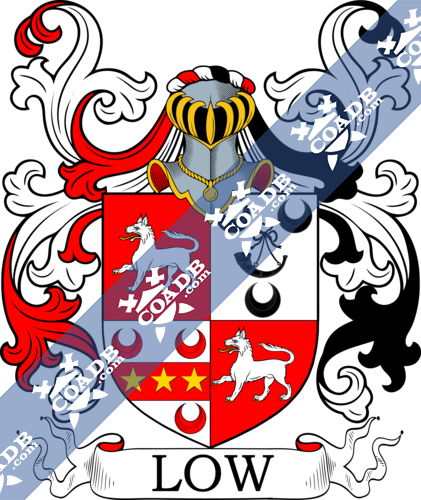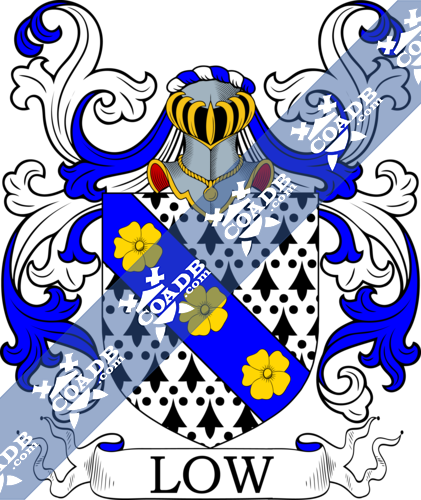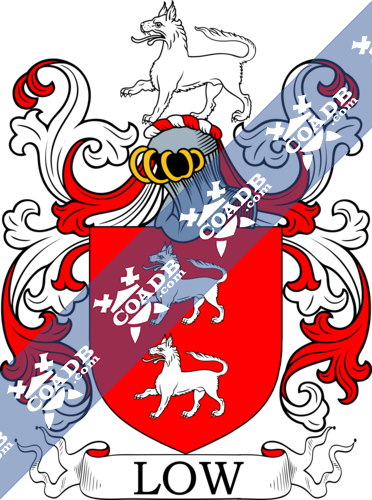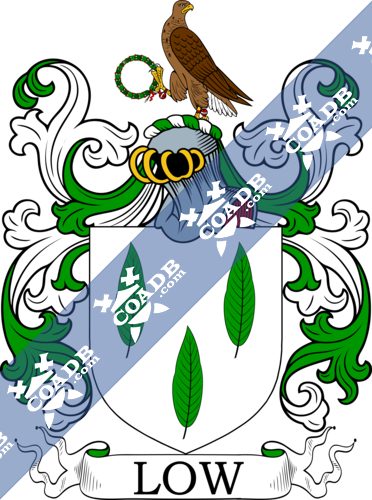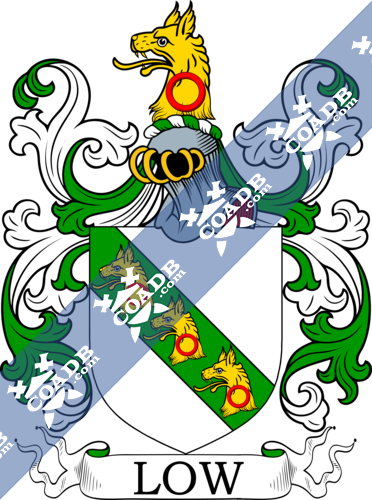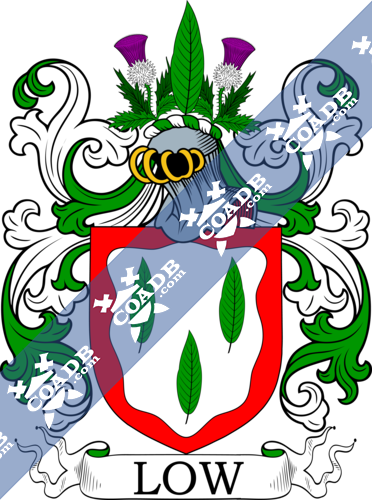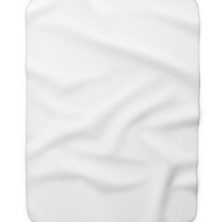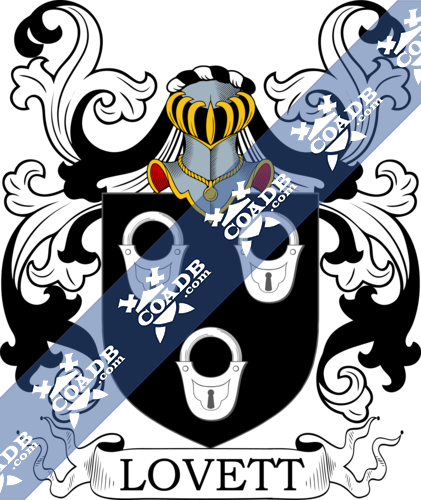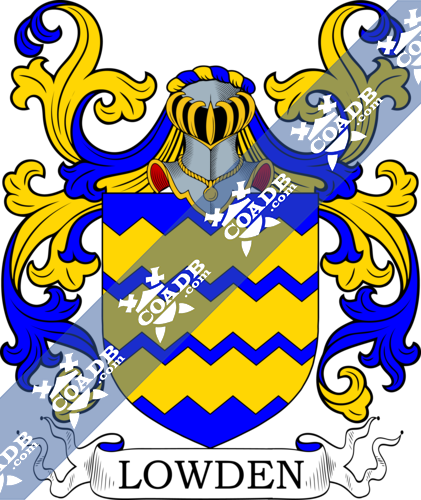Low Family Crest, Coat of Arms and Name History
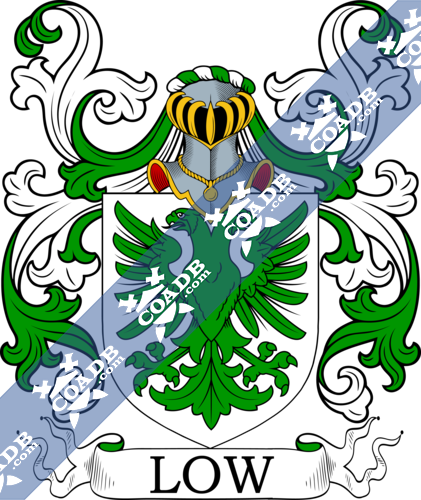
Low Coat of Arms Gallery
Don’t know which Coat of Arms is yours?
We can do a genealogical research. Find out the exact history of your family!
Learn MoreLOW
The origin of many surnames often found their beginnings in multiple sources as is the case with the English Scottish surname Low which derives from one of four origins. The first evolved from the medieval English “lawe” a derivative of the ancient English word “hlaw” both of which translates to hill. In this context the surname would be geographical. The second source is the Anglicized, “lah” or “lowe” which comes from the old Norse word “lagr” which was a pet name for someone of diminutive stature. The name was thought to have immigrated to the British Isles during the Viking Age. The third source is of the English Scottish surname is of Norman French origin from the words “lou” or “leu” derivatives of the Latin word “lupis” which translates to wolf. The fourth source is a nickname for the Scottish given name Lawrence.
Variations in the spelling of surnames was quite common in ancient and medieval times, few people of this era were literate and those who were often did not have many comprehensive guidelines regarding spelling. Many of the scribes charged with the task of record keeping often spelled phonetically. In many ancient records, Low may appear as; Lowe; Lowse; Lowes; and McLoy among others.
While the use of surnames was a typical practice in France, started by the Norman aristocracy, the use of surnames in most of Europe did not come into common usage until the mid to late 16th century. Surnames of non-nobles generally found their origins by use of patriarchal/matriarchal names, reference to the individuals occupation, references to defining physical traits, a familiar geographical location or a topographical landmark found near the individuals home or birthplace, or the name of the village in which the person lived among other sources. Soon, surnames would come not just to represent an individual but whole families.
The use of surnames served the practical purpose of making it easier to distinguish persons who shared a common given name. This practice also made the tracking of citizens for census and tax purposes easier for the government as well. This is evident in the fact that most records of non-nobles
are found in official government documents. A case in point, one of the earliest appearance in England of a variation of the surname Low is that of John le Lu found in the Gloucester tax rolls show records dated 1207. These rolls, were a series of census and tax records kept by the English Treasury by order of King John, the oldest of which date back seven hundred years to the 12th century. They hold the distinction of being the oldest consecutive set of records detailing English governance in the United Kingdom.
The use of surnames served the practical purpose of making the tracking of immigrants easier when people began migrating to America and the British Commonwealth countries of Canada, Australia. And New Zealand. Some of the first recorded immigrants to the United States with this surname were William Low who arrived in 1635 and settled in Virginia. Brothers, Joseph and Micheal Low were some of the early immigrants to Canada, arriving in 1751 and settling in Halifax, Nova Scotia. John and Elizabeth Low were early settlers to Australia, arriving and settling in South Australia in 1854. William Low was one of the early settlers to New Zealand, he landed in 1841 and settled in Wellington.
Worldwide, the highest concentration of people with the surname Low are found in New Zealand, Australia, the United Kingdom, the United States, and Canada. By state, the largest percentile of those with the surname Croft live in California, Florida, Georgia, Hawaii, and Tennessee.
There are many persons of note who bear the surname Low, such as New Zealand born economist Sir Alan Roberts Low. He was also the fifth governor of the Reserve Bank, and was director of the National Bank of New Zealand. For his service, Low was knighted in 1977 as part of Queen Elizabeth’s Silver Jubilee and Birthday Honours.
Canadian born, George Low was a member of the United States Navy. He was stationed upon the USS Tennessee and while the ship was at New Orleans, Louisianan one of the crew members fell overboard. Low jumped overboard and kept the man afloat until rescue boats could get to them. In recognition of his action, Low received the Medal of Honor, the United States highest military honor.
Blazons & Genealogy Notes
1) (co. Lancaster). Ar. an eagle displ. with two heads vert.
2) (London, 1684). Quarterly, 1st and 4th, gu. a wolf pass, ar.; 2nd, ar. a hunting horn stringed sa. betw. three crescents of the last; 3rd, ar. on a fesse betw. three crescents gu. as many mullets or.
3) Gu. two wolves pass. ar. Crest—A wolf pass. ar.
4) Ar. three leaves vert. Crest—A falcon reguard. holding in the dexter claw a laurel crown ppr.
5) Erm. on a bend (another, engr.) az. three cinquefoils or.
6) (confirmed by Fortescue, Ulster, to Simon Low, Esq., of Galbally, co. Limerick). Motto—Facta non verba. Ar. on a bend vert three wolves’ heads erased or, each charged with an annulet gu. Crest—A wolf’s head, as in the arms.
7) (Aberdeen, Scotland). Motto—Aspera me juvant. Ar. three leaves vert within a bordure wavy gu. Crest—A leaf betw. two thistles stalked and leaved ppr.

